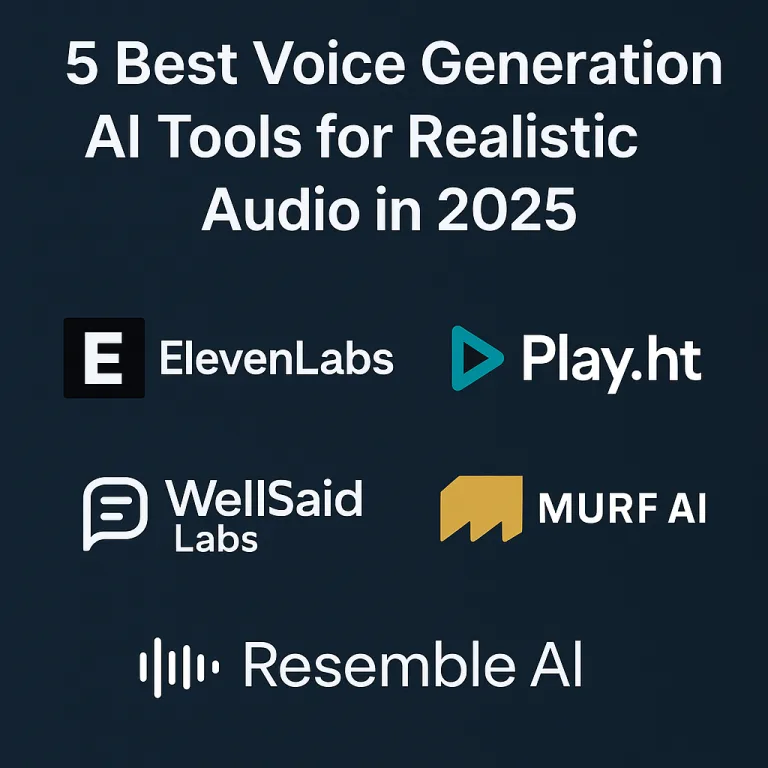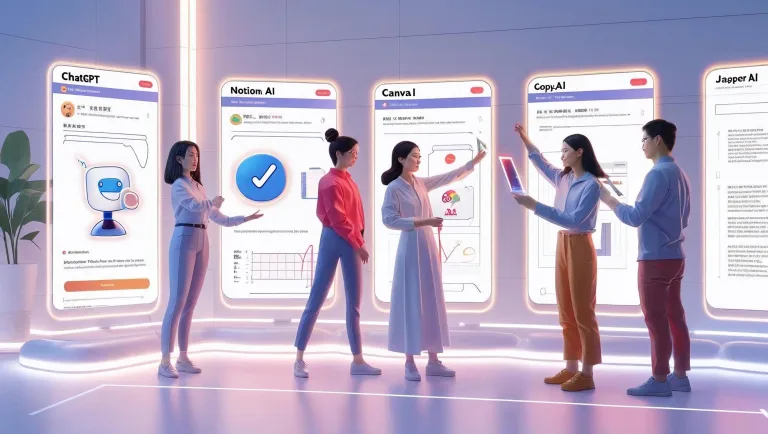Table of Contents
Introduction: The Rise of AI in Everyday Life
Artificial intelligence (AI) has swiftly transitioned from being a futuristic concept to an integral part of modern life. Its presence is no longer confined to research labs or industrial sectors; AI is now embedded in tools and systems people use daily, often without realizing it. This rapidly evolving technology has gained traction due to its ability to enhance efficiency, provide personalized experiences, and solve complex problems across various domains.
Recognized for its versatility, AI finds application across industries, from healthcare to finance, entertainment, and retail. For instance, voice assistants like Siri and Alexa demonstrate how AI simplifies routine tasks, allowing individuals to set reminders, control smart home devices, or even order groceries with mere spoken commands. Similarly, AI-driven recommendation algorithms are revolutionizing how users access media and shop online by tailoring suggestions to their tastes and preferences.
The rise of machine learning and deep learning models has also enabled systems to make data-driven decisions with unparalleled accuracy. Tools such as predictive maintenance in industries or fraud detection in financial services showcase the expanding footprint AI has established. Moreover, AI-powered chatbots are redefining customer service, providing instant responses and reducing wait times for users.
Beyond consumer applications, artificial intelligence contributes to public services and urban planning. Examples include optimizing traffic patterns through smart city infrastructure or detecting anomalies in public health data to mitigate disease spread. AI systems continue to grow increasingly intuitive, enabling humans to rely on technology not just for convenience but also for solving pressing global challenges.
Rapid advancements in AI technologies have made it possible to automate complex processes, unlock insights from immense datasets, and make decisions faster than humans can. This transformation is not only reshaping day-to-day experiences but positioning AI as a cornerstone of the future of innovation. Taking note of its widespread adoption begs the question: how deeply is AI embedded in the fabric of everyday life?
AI and Personalized Shopping Experiences
Artificial Intelligence is revolutionizing retail by enabling highly personalized shopping experiences for consumers. Its ability to analyze vast amounts of data has made it a cornerstone of modern e-commerce and brick-and-mortar stores alike. Through advanced algorithms, AI evaluates customer preferences, behaviors, and purchasing history to deliver tailored product recommendations and enhance overall satisfaction.
Retailers leverage machine learning models to curate product suggestions that resonate with individual shoppers. For instance, AI-powered systems like recommendation engines analyze browsing patterns, time spent on specific items, and past purchases to provide dynamic suggestions. These systems adapt in real-time, ensuring recommendations align with evolving preferences. Similarly, platforms use AI to segment customers based on demographic data or interests, allowing for more focused marketing strategies.
Chatbots and virtual assistants are also integral in transforming the shopping process. These AI tools offer instant support with inquiries, product discovery, and even purchasing decisions. Natural language processing enables them to understand questions and deliver contextually relevant answers. In addition, virtual assistants can guide customers to discover deals, promotions, or products that suit their needs, creating a seamless shopping experience.
AI-driven inventory management streamlines operations by predicting demand trends. Retailers utilize predictive analytics to optimize stock levels, reduce waste, and ensure high-demand products remain accessible. Such intelligent forecasting not only prevents stock shortages but also supports personalized notifications sent to customers about availability.
Retailers further enhance personalization through visual recognition technology. AI analyzes uploaded photos or items in a shopper’s wishlist to present similar or complementary products. This creates unique customer experiences, leveraging personal tastes as the foundation.
Ultimately, AI empowers retailers to bridge the gap between customer expectations and business goals while fostering loyalty through personalization, responsiveness, and efficiency.
Smart Home Technology: Transforming Daily Convenience
Smart home technology leverages Artificial Intelligence (AI) to streamline tasks, enhance security, and optimize energy efficiency in modern households. By incorporating interconnected devices, AI creates an environment where appliances and systems work cohesively, allowing homeowners to experience unprecedented levels of convenience, comfort, and control.
AI-powered virtual assistants, such as Amazon Alexa, Google Assistant, and Apple’s Siri, are instrumental in managing smart homes. These systems use natural language processing (NLP) to respond to voiced commands, enabling actions such as adjusting thermostats, playing music, setting reminders, or even ordering groceries. The integration of voice control eliminates the need for physical interaction with devices, simplifying common tasks.
Smart thermostats serve as another transformative application. Devices like Nest Thermostat or Ecobee utilize machine learning algorithms to adapt temperature settings based on user behavior and preferences. They analyze patterns, such as when occupants leave or return home, to automatically regulate heating and cooling, optimizing comfort while reducing energy consumption.
Lighting systems also benefit from AI integration. Smart bulbs and lighting systems can adjust brightness, color, and timing based on pre-set schedules or environmental factors, such as natural daylight levels. Motion sensors incorporated into these systems provide automatic illumination when a person enters a room, improving efficiency and safety.
Security systems designed for smart homes reflect substantial advancements through AI capabilities. Video surveillance cameras embedded with facial recognition and motion detection provide real-time alerts for suspicious activities. AI algorithms in doorbell cameras, such as Ring or Arlo, distinguish between familiar faces and strangers, enhancing security measures.
Additionally, robotic vacuum cleaners like Roomba employ AI to map room layouts and schedule cleaning routines. These devices learn floor plans, avoid obstacles, and adapt to household changes, ensuring thorough and efficient cleaning without manual operation.
These innovations emphasize how AI-integrated smart home technologies transform daily life, offering greater accessibility, increased autonomy, and improved energy management—all while enhancing overall living standards.
Healthcare Revolutionized: AI in Diagnostics and Treatment
Artificial intelligence is reshaping healthcare by offering unprecedented precision and efficiency in diagnostics and treatment. AI-driven algorithms analyze vast amounts of patient data, medical imagery, and health records to detect diseases at an earlier stage and with greater accuracy, enabling proactive intervention. These tools help identify patterns that may elude human practitioners, particularly in complex fields such as oncology, cardiology, and neuroscience.
Machine learning models are particularly effective in imaging diagnostics. For instance, AI applications like convolutional neural networks (CNNs) excel at identifying anomalies in radiographs, CT scans, and MRIs. They have been widely used for detecting breast cancer, lung nodules, and other conditions, rivalling or even surpassing the diagnostic performance of experienced radiologists. Similarly, AI-powered systems in pathology assist in analyzing biopsy samples, significantly reducing the time required for disease classification.
In clinical care, AI enhances treatment by tailoring solutions to the specific needs of patients. Precision medicine platforms combine genetic information, lifestyle factors, and clinical data to recommend personalized treatment plans. This approach has been transformative in managing chronic diseases, such as diabetes and cardiovascular conditions, where individualized strategies yield better outcomes. AI also facilitates drug discovery by simulating molecular interactions to identify viable compounds, dramatically shortening the time needed for research.
Natural language processing (NLP) enables streamlined communication within healthcare teams by summarizing patient notes, suggesting diagnoses, and ensuring continuity across care settings. Additionally, robotics powered by AI assist in surgeries by improving precision, reducing invasiveness, and optimizing recovery times.
While advancements are remarkable, the integration of AI in healthcare demands oversight to ensure ethical use, accuracy, and patient data security, addressing concerns as adoption accelerates.
Transportation Reinvented: Self-Driving Cars and Beyond
Artificial intelligence is revolutionizing transportation, with autonomous vehicles serving as a hallmark of this transformation. Self-driving cars leverage advanced algorithms, machine learning, computer vision, and sensor technologies to navigate complex environments without human intervention. Sensors, such as LiDAR, radar, and cameras, enable these vehicles to detect road conditions, obstacles, and traffic signals in real time. Their ability to process vast quantities of data ensures optimized decision-making and adaptation to unforeseen circumstances.
One significant impact of self-driving cars is the potential to reduce road accidents, as autonomous systems are less prone to human errors such as distractions, fatigue, or impaired judgment. Governments and private enterprises are actively testing autonomous fleets to improve safety standards and expand transportation options. For instance, ride-hailing companies are investing in AI-powered cars to deploy driverless taxis, offering greater accessibility and efficiency for urban commuters.
Other innovations extend beyond individual vehicles. AI is integrated into public transit systems to improve scheduling and optimize routes, reducing delays and costs. Predictive analytics enable transit authorities to anticipate maintenance needs, ensuring seamless operations and enhanced passenger experiences. Similarly, AI is reshaping logistics and freight transportation. Autonomous trucks are equipped with adaptive AI systems, resulting in faster delivery times and better fuel efficiency.
As these technologies evolve, the infrastructure supporting them is also undergoing a transformation. Smart cities utilize AI-driven traffic management systems that analyze flow patterns and adjust signal timings to alleviate congestion. This ensures smoother commutes and reduces environmental impact by cutting fuel consumption associated with idling vehicles.
Despite advancements, ethical and regulatory challenges persist, such as addressing liability issues and ensuring equity in access to AI transportation. Nevertheless, innovation in autonomous technologies and AI-powered systems promises global changes in how humans travel and interact with physical spaces.
AI in Education: Personalized Learning and Virtual Tutors
Artificial Intelligence is revolutionizing education by fostering individualized learning experiences and offering intelligent tutoring systems. Personalized learning leverages AI algorithms to tailor educational content and experiences to each student’s unique needs, pace, and learning style. By analyzing data such as performance metrics, engagement levels, and learning preferences, AI-powered platforms adapt lessons dynamically. This approach addresses gaps in comprehension, ensuring that students receive targeted support where they need it most.
AI also plays a pivotal role in virtual tutoring systems. Virtual tutors, powered by natural language processing (NLP) and machine learning, simulate human tutors by offering real-time assistance and feedback. These systems can answer questions, explain concepts, and provide detailed step-by-step instruction. Tools like chatbots act as accessible resources, facilitating a 24/7 learning environment that empowers students to seek help outside traditional classroom hours. As a result, learners receive continuous support regardless of their geographic location or time zone.
Furthermore, AI aids educators by automating routine tasks like grading assignments or tracking students’ progress. This allows teachers to focus more on student interaction and curriculum design. Adaptive learning platforms, such as DreamBox and Carnegie Learning, demonstrate how these technologies reshape traditional classroom dynamics by catering to diverse educational needs.
AI’s integration into education also extends to inclusivity. For instance, speech recognition systems help students with disabilities better engage with content, while translation tools break down language barriers for non-native speakers. This ensures that education is more accessible and inclusive than ever before.
By providing intelligent, data-driven learning interventions, AI is enhancing the quality and efficiency of educational experiences across all levels.
Entertainment Powered by AI: Streaming Platforms and Gaming
Artificial Intelligence has revolutionized the entertainment industry, transforming how content is delivered and enjoyed. Streaming platforms rely heavily on AI to enhance user experience and engagement. Advanced recommendation algorithms analyze user behavior, preferences, and viewing history to tailor personalized content suggestions. Platforms like Netflix, Hulu, and Spotify employ machine learning models to predict what users are likely to enjoy next, keeping them immersed in their ecosystems. Speech recognition and natural language processing (NLP) further optimize search functionality, allowing users to find content effortlessly through voice commands.
AI also plays a substantial role in content creation and optimization. Streaming services utilize AI to auto-generate subtitles, translate content into multiple languages, and even upscale older media into higher resolutions through deep learning techniques. Insights from data analytics guide producers in developing shows and movies that resonate with targeted audiences, aligning creative decisions with viewer preferences.
In the gaming sector, AI powers smarter, more dynamic gameplay. Non-Playable Characters (NPCs) now leverage adaptive AI to exhibit life-like behavior, making games more immersive and challenging. Real-time decision-making enables NPCs to respond unpredictably, enhancing the user’s gaming experience. Procedural content generation, another AI-driven technology, creates vast, intricate virtual worlds without developer micromanagement, as seen in games like No Man’s Sky.
Cloud gaming platforms like NVIDIA GeForce Now and Google Stadia use AI to optimize bandwidth and reduce latency, ensuring seamless gameplay even on lower-end devices. AI-driven anti-cheat systems identify unfair practices, preserving integrity in competitive gaming. With virtual reality (VR) and augmented reality (AR) advancements, AI integrates sensory experiences, pushing the boundaries of interactive entertainment. Its application ensures responsive gameplay and adaptable storytelling that evolves with the player’s decisions, redefining the modern entertainment landscape.
Revolutionizing Communication with AI-Powered Language Tools
Artificial Intelligence has transformed communication by introducing tools capable of enhancing language processing, facilitating deeper understanding, and enabling real-time interactions across linguistic and cultural boundaries. AI-powered language tools encompass applications that leverage natural language processing (NLP) to understand, interpret, and respond to human communication with remarkable accuracy.
Key Advancements in AI Communication Tools
- Language Translation Services AI-driven translation platforms, such as Google Translate and DeepL, have made multilingual communication seamless. These tools use advanced machine learning models to translate text and speech instantly while adapting to contextual nuances of language. By supporting hundreds of languages, they empower users to connect globally without barriers.
- Virtual Assistants Applications such as Siri, Alexa, and Google Assistant demonstrate how AI has become an integral part of daily communication. These virtual assistants employ speech recognition technology to process spoken commands, retrieve relevant information, execute tasks, and answer queries, creating highly personalized user interactions.
- Text Prediction and Composition AI algorithms integrated into word processors and communication platforms like Gmail and Microsoft Word predict text and offer suggestions to improve writing clarity. Tools such as Grammarly and Jasper refine grammar, coherence, and tone, reducing errors and enhancing professional communication.
- Chatbots and Conversational AI Businesses increasingly rely on AI chatbots to provide instant customer support. These conversational tools utilize NLP and machine learning to understand and respond empathetically, ensuring efficient and accurate communication. They handle inquiries, resolve issues, and deliver tailored experiences, minimizing wait times.
Transformative Impact
By bridging gaps in language, automating repetitive tasks, and delivering rapid responses, AI-powered communication tools have redefined interaction across sectors. These technologies are scalable, adaptable, and enable efficient exchange of information, even in complex environments.
AI in Finance: Smarter Banking and Investment Strategies
Artificial intelligence is transforming the financial industry by revolutionizing how institutions handle data, automate processes, and manage risks. AI technologies, such as machine learning and predictive analytics, empower banks, investment firms, and fintech companies to deliver more efficient and personalized services to their customers while optimizing operational workflows.
Applications in Banking
AI enhances customer experiences by facilitating faster, more accurate responses to inquiries through the use of virtual assistants or chatbots. These systems can process vast amounts of customer data, addressing specific needs and resolving issues without human intervention. AI-powered fraud detection systems in banking use real-time analysis of transactional patterns to identify irregularities, safeguarding customer accounts against unauthorized actions. Banks also deploy credit-scoring algorithms that analyze customer behavior and spending habits, making loan-awarding processes more streamlined and reliable.
Transforming Investment Strategies
AI is reshaping investment planning by automating portfolio management and stock predictions. Robo-advisors utilize AI to assess individual financial goals, risk tolerance, and market trends, offering tailored investment recommendations. Machine learning models scan enormous datasets to identify market signals and predict price fluctuations, allowing asset managers to make informed decisions with reduced manual effort. Additionally, AI aids in high-frequency trading by executing trades at split-second intervals based on pattern recognition, thus capturing fleeting opportunities in volatile markets.
Risk Management and Compliance
Financial institutions benefit from AI-driven tools for risk assessment and compliance monitoring. These systems analyze regulatory requirements and business practices, minimizing errors and ensuring adherence to legal standards. Through deep analysis of historical data, AI models improve accuracy in forecasting economic fluctuations, helping firms mitigate risks associated with market volatility and global uncertainties.
Leveraging artificial intelligence in finance not only enhances efficiency but also provides competitive advantages by enabling smarter approaches to banking and investment decision-making.
Sustainability and Environmental Impact: AI for a Greener Future
Artificial intelligence is driving transformative advancements in sustainability by optimizing resource utilization and enhancing environmental strategies. Its applications span diverse sectors, facilitating more efficient practices and reducing humanity’s ecological footprint. AI’s role in combating environmental challenges is increasingly crucial as global attention shifts toward sustainability.
One prominent application of AI lies in energy management. Machine learning algorithms are deployed to analyze energy consumption patterns, predict demand fluctuations, and automate the allocation of renewable sources such as solar and wind energy. For instance, AI can forecast weather changes with high accuracy, allowing energy grids to adapt responsively and minimize reliance on fossil fuels. Similarly, smart home systems use AI to manage electricity usage effectively, reducing waste and lowering carbon emissions.
In agriculture, precision farming powered by AI monitors crop health, soil conditions, and irrigation needs. By combining satellite imagery, IoT sensors, and data analytics, farmers can minimize fertilizer and water usage while optimizing yields. This reduces environmental degradation caused by over-farming and excessive resource consumption. AI-driven pest control solutions further enhance ecological balance by targeting pests without harming beneficial organisms.
AI also supports wildlife conservation through advanced data analysis. Tracking animal migration patterns, monitoring habitat loss, and detecting illegal poaching activities using machine learning help protect endangered species. Additionally, organizations are utilizing AI-powered tools, such as drones and image recognition software, to assess deforestation levels and enforce forest preservation policies.
Waste management benefits significantly from AI integration. Smart waste sorting systems use AI to identify and separate recyclable materials efficiently, reducing landfill overflow. AI models can also forecast waste production trends, enabling cities to develop more sustainable disposal strategies.
By fostering innovation across energy, agriculture, conservation, and waste management, AI emerges as a key enabler in achieving global sustainability goals. Its potential to address climate-related challenges underscores its value in creating a greener future.
The Future of AI: Emerging Trends and Ethical Considerations
Artificial intelligence is evolving rapidly, bringing transformative trends that are reshaping industries and societal norms. Among the emerging advancements, generative AI continues to revolutionize creative fields, enabling machines to produce text, images, music, and even complex designs with minimal human intervention. Automation driven by AI is expanding in sectors such as healthcare, finance, and manufacturing, offering enhanced efficiency in diagnostics, fraud detection, and assembly-line production.
Additionally, multimodal AI systems capable of understanding and integrating multiple data types like text, audio, and video are gaining traction, providing unprecedented capabilities in human-machine interactions. The integration of AI with edge computing is reducing latency issues while enabling real-time applications such as autonomous vehicles and smart cities. Quantum computing is another trend poised to elevate AI performance as it promises faster data processing and complex problem-solving capabilities beyond traditional computing systems.
The proliferation of AI technologies also raises critical ethical concerns. As AI systems increasingly intervene in decision-making processes, questions about accountability and bias remain central in public discourse. Algorithms trained on data sets may inadvertently replicate societal prejudices, necessitating robust measures to ensure fairness and inclusivity. Furthermore, the potential misuse of AI in surveillance and privacy breaches demands clear regulations to protect individuals from overreach.
The environmental implications of AI cannot be overlooked, particularly in relation to its energy consumption in model training. Companies and researchers are exploring greener approaches, aiming to balance innovation with sustainability. Transitioning into a future heavily influenced by AI, stakeholders must advocate for transparency, regulatory frameworks, and interdisciplinary collaboration to address ethical dilemmas while fostering responsible development.
Conclusion: How AI Continues to Shape Our World
Artificial intelligence persists as a transformative driver, gradually embedding itself into virtually every sphere of human life. Its applications extend beyond convenience, influencing industries, societal structures, and even global challenges. From enabling predictive healthcare interventions to revolutionizing traditional education models, AI demonstrates the unparalleled ability to streamline processes and facilitate innovation.
Industries like agriculture leverage AI-driven systems for precision farming, enhancing resource efficiency and reducing environmental impact. Similarly, logistics and supply chain management achieve higher accuracy and delivery speed by employing machine learning algorithms to forecast demand and optimize routes. Such advancements highlight how AI continuously redefines economic landscapes.
AI’s contributions to social progress are equally significant. Programs powered by AI provide accessibility solutions for individuals with disabilities, such as text-to-speech tools and advanced prosthetics. Furthermore, urban planning benefits from AI-driven models designed to create sustainable cities through traffic management, energy optimization, and smart infrastructure.
In addition to direct impacts, AI’s potential to combat global crises cannot be overlooked. Climate change mitigation is a prime example, with systems analyzing environmental data to promote effective policy decisions, renewable energy adoption, and conservation efforts. Meanwhile, disaster response operations increasingly integrate AI technology to predict risks, manage resources, and coordinate rescue missions.
While AI’s influence continues to expand, it also presents ethical and regulatory challenges. Critical discussions surrounding data privacy, algorithmic fairness, and accountability are gradually shaping the boundaries within which AI operates. These ongoing dialogues underscore the importance of developing AI systems that are both effective and socially responsible.
AI’s role in shaping modern civilization exemplifies the boundless potential of technology when harnessed intentionally and inclusively. Its dynamic capability to adapt and solve continues to define the path forward, reshaping how societies function and thrive.
1. Smart Assistants like Siri and Alexa
When you say “Hey Siri” or “Alexa, what’s the weather?”, you’re interacting with AI in action. These smart assistants rely on Natural Language Processing (NLP) to understand and respond to your queries.
They not only recognize speech but learn from your patterns over time — like when you usually ask for reminders, news, or traffic updates. The more you interact, the more tailored the responses become.
Want to see how AI is revolutionizing education too? Explore our deep-dive on Artificial Intelligence in Education to learn how schools and students benefit from similar technology.
2. Personalized Recommendations on Netflix and Amazon
Ever wonder how Netflix knows exactly what movie you might like next? Or how Amazon always suggests the perfect product? That’s AI-driven recommendation engines at work.
These systems analyze your browsing history, past behavior, and even what similar users have done to predict your preferences. It’s one of the most powerful commercial uses of machine learning today.
Curious about what tools power these experiences? Discover the Top 10 AI Tools Anyone Can Use Today — from personal assistants to design generators.
3. AI-Powered Marketing Automation
Marketers today no longer rely solely on guesswork. AI helps them create targeted campaigns by analyzing customer behavior, predicting buying trends, and automating engagement. This includes everything from AI-written content to chatbots and smart email triggers.
Whether it’s scheduling posts at optimal times or generating real-time customer responses, AI in marketing is boosting efficiency and ROI across the board.
Check out our post on AI in Marketing: The Ultimate Toolkit to Create, Target, and Convert Faster to explore how AI is transforming the entire marketing funnel.
Final Thoughts
Artificial intelligence is already deeply embedded in how we live, shop, work, and learn. The examples above are just the beginning — and as AI continues to evolve, its presence in everyday life will only become more significant.
Make sure you explore the recommended articles to stay ahead of the curve and learn how AI is reshaping industries and personal experiences alike.





